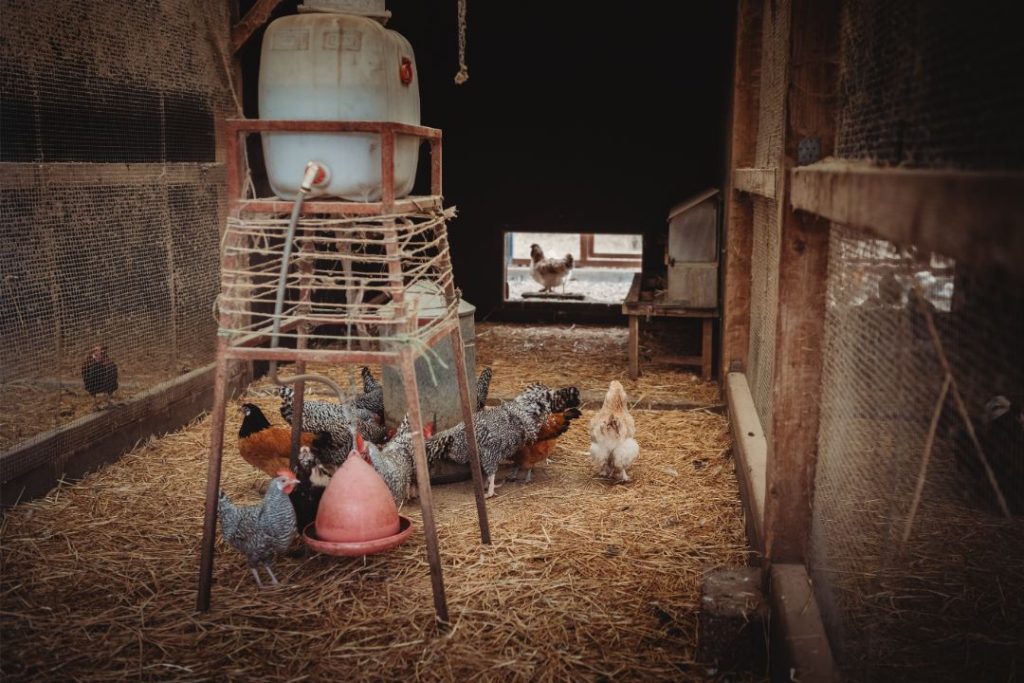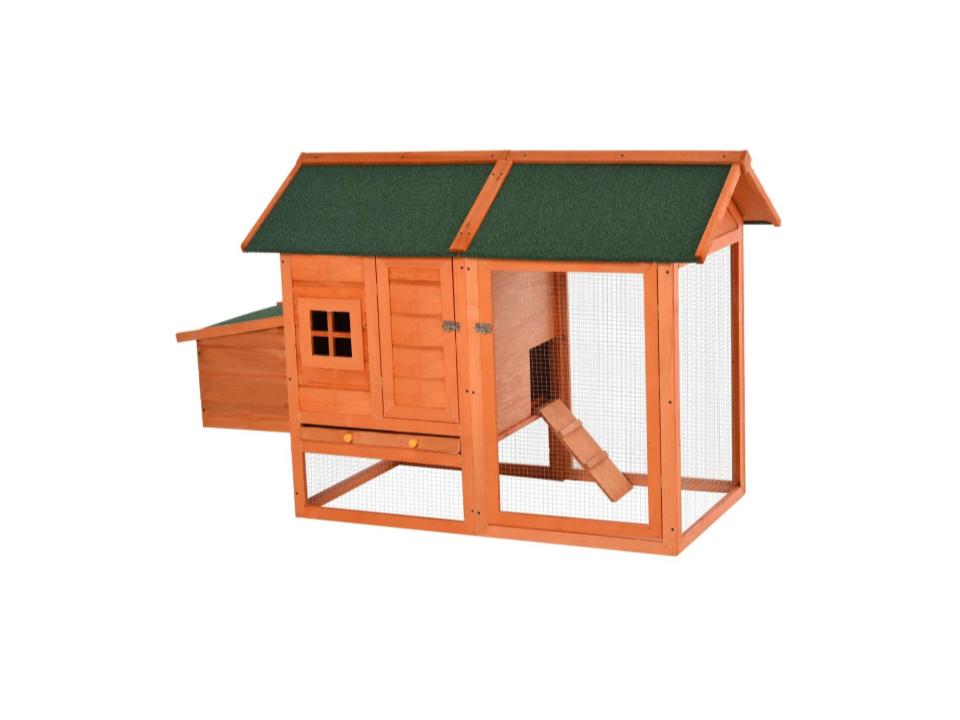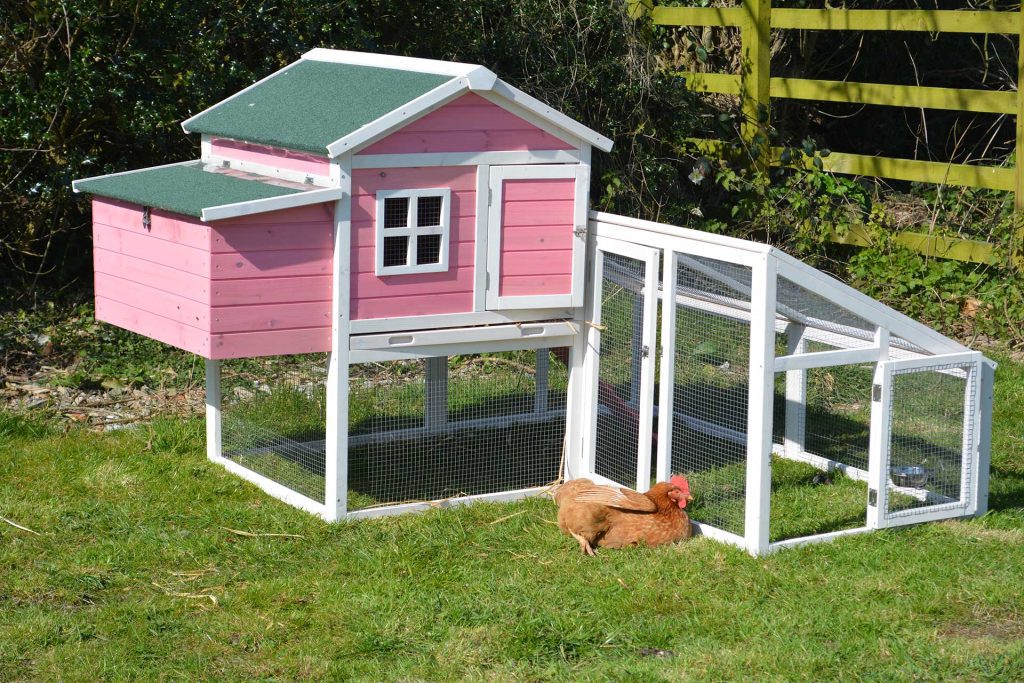Maintaining a chicken coop’s cleanliness is essential, but what if it has a dirt floor? You might think it’s an uphill task. But with the right methods, it’s a breeze. Disinfecting a dirt floor keeps your chickens healthy and thriving.
Many chicken enthusiasts swear by the benefits of a natural dirt floor, praising its cost-effectiveness and authentic farm feel. Yet, with its popularity comes the inevitable question of keeping it clean.
As time passes, alternative methods emerge, offering solutions tailored to a dirt floor’s unique challenges. Curious about how to achieve a sanitized coop without compromising the natural essence?
This article will take you through the steps and techniques to ensure your chicken coop remains sanitized and your birds stay healthy. Stay with us as we unfold the secrets of how to disinfect chicken coop with dirt floor.
Is a Dirt Floor Ok for a Chicken Coop?
The floor type is a critical consideration when setting up a chicken coop. Many people wonder if a dirt floor is suitable for their feathered friends. Let’s explore the advantages and drawbacks of dirt floors in chicken coops.
Advantages of Dirt Floors
1. Natural Feel: Chickens originate from wild environments. Dirt floors mimic their natural habitat, offering them a sense of familiarity.
2. Cost-Effective: Opting for a dirt floor can save you money. There’s no need to invest in expensive flooring materials or regular replacements.
3. Proper Drainage: One significant benefit of dirt floors is drainage. Water doesn’t pool, reducing the chances of mold and bacterial growth.
4. Flexibility: Dirt floors offer flexibility. Without major renovations, you can easily modify, expand, or change the coop layout.
Drawbacks of Dirt Floors
1. Parasite Haven: Dirt floors can become a breeding ground for parasites if not cleaned regularly. Worms, mites, and lice love damp, dirty environments.
2. Disease Risk: Bacteria and viruses can thrive in dirt, especially if droppings accumulate. Regular cleaning is a must.
3. Maintenance: While initial setup might be easy, dirt floors require consistent upkeep. You’ll need to turn the soil, add fresh dirt, and remove waste regularly.
4. Weather Impact: In rainy seasons, dirt floors can become muddy and messy. In contrast, during droughts, they might become too dry and dusty.
Dirt floors in chicken coops have their merits and demerits. Considering a dirt floor, weigh the advantages against the potential challenges. A dirt floor can serve your chickens well with diligent maintenance and regular cleaning. However, always be vigilant about the health of your flock and the conditions of their environment.
Should a Chicken Coop Have a Floor?
Deciding on the type of floor for your chicken coop can be challenging. Many factors come into play, including ease of cleaning, chicken comfort, and personal preferences. Let’s delve into the world of chicken coop flooring and discover the benefits and drawbacks of each option.
Concrete Floors: The Clean Solution
- Durability at its Best: Concrete floors last for years. They withstand the test of time and protect against predators.
- Cleaning is a Breeze: You can easily hose down a concrete floor. It makes the cleaning process straightforward and quick.
- Protection Against Pests: Rodents find it tough to burrow through concrete. Your chickens remain safe and sound.
However, concrete can be cold in winter. Chickens might not find it as comfortable as other materials.
Wooden Floors: The Traditional Choice
- Warm and Cozy: Wood provides a warm surface. Chickens love it, especially during cold seasons.
- Elevated Protection: Wooden floors raise the coop off the ground. This elevation keeps dampness at bay.
- Aesthetically Pleasing: A wooden floor looks good. It adds a rustic charm to your backyard.
But wood can rot over time. Regular maintenance and checks become necessary to ensure longevity.
Dirt Floors: Going Natural
- Cost-Effective: A dirt floor doesn’t require much investment. It’s the most economical option available.
- Natural Feel: Chickens enjoy scratching and pecking at the ground. A dirt floor allows them to indulge in their natural behaviors.
- Good Drainage: Water drains away easily. You won’t have to deal with waterlogged conditions.
On the flip side, dirt floors can become muddy. They also pose a risk of parasite infestation if not maintained well.
What is Best to Put on the Floor of a Chicken Coop?
Let’s explore some of the best materials to use for chicken coop flooring.
Straw or Hay: Nature’s Bedding
Farmers have used straw or hay for centuries as a natural animal bedding material. Here’s why it remains a top choice for many chicken coop owners:
- Straw and hay offer superior comfort. Chickens love nesting in these materials, making them feel right at home.
- Warmth is another benefit. During colder months, straw acts as an insulator, keeping the cold at bay.
- Changing out old straws for fresh ones is simple. Moreover, used straw can head straight to the compost pile.
But remember, wet straws can become moldy. Regular checks and changes are essential to prevent health issues.
Sand: The Drainage Expert
Many modern coops now feature sand as a preferred flooring material. Here’s why:
- Sand drains moisture away quickly. This keeps the coop dry and reduces the risk of diseases.
- Cleaning becomes less of a chore. Scooping out droppings from sand is similar to cleaning a cat litter box.
- Chickens enjoy dust baths in the sand. It helps them get rid of pests and keeps them clean.
- In hot weather, the sand stays cool. Chickens can rest comfortably without getting overheated.
However, sourcing the right kind of sand is essential. Coarse construction sand works best, avoiding fine sandbox varieties.
Wood Shavings: The Fragrant Choice
Wood shavings, especially from pine trees, are another favorite for coop floors.
- Absorbency is top-notch. Wood shavings soak up moisture, ensuring a dry environment for your flock.
- The pleasant aroma of pine shavings keeps the coop smelling fresh. It’s a win for both chickens and humans.
- Being biodegradable, wood shavings can join your compost once they’ve served their purpose in the coop.
- Chickens find wood shavings comfortable for both resting and laying eggs.
However, sourcing untreated wood shavings is crucial. Chemicals or additives can harm your chickens.
The choice of flooring material for a chicken coop depends on your priorities. Whether it’s the natural warmth of straw, the excellent drainage of sand, or the delightful aroma of wood shavings, each option has its merits. Assess your needs, consider your flock’s preferences, and choose a material that ensures happy, healthy chickens.
How to Clean a Chicken Coop with a Dirt Floor?
Cleaning a chicken coop with a dirt floor demands diligence. Proper cleaning ensures a healthy environment for the poultry, reduces the risk of diseases, and promotes better productivity.
Commence by Addressing Bedding Materials
Hay, straw, and other bedding materials absorb moisture and droppings. Over time, this can lead to the growth of harmful microorganisms. Before any cleaning starts, remove all these materials. Disposing of old bedding is essential. After cleaning, introduce fresh bedding for the comfort and safety of the chickens.
Droppings: The Main Culprit
Droppings contribute to the majority of the mess in a coop. Accumulated droppings emit a foul odor and can attract unwanted pests. Equip yourself with a flat shovel or a rake. Use these tools to scrape off droppings from the coop’s floor efficiently. Regular removal ensures a fresh environment and reduces deep cleaning efforts.
Breathing Freshness into the Soil
The unique aspect of a dirt floor is the soil. Over time, the top layer can become compacted and saturated with moisture. Bring out a garden fork for this task. Turn the soil over to expose a fresh layer underneath. This process helps dry out any wet spots and gives chickens a new patch to scratch and peck.
A chicken coop with a dirt floor has its cleaning challenges. However, by systematically addressing bedding, droppings, and the soil, maintaining cleanliness becomes achievable. Regular cleaning ensures a pleasant environment and guarantees healthy, productive chickens.
How to Disinfect Chicken Coop With Dirt Floor?
To disinfect the chicken coop with dirt floor follow the easy steps below:
Relocating the Flock
Before beginning the disinfection process, move all chickens out of the coop. A temporary pen or enclosure works well for this purpose. Relocating the birds ensures their safety and gives you ample space to clean and disinfect without disturbances.
Going Natural with Lime
Lime serves as a fantastic natural disinfectant for dirt floors. Here’s why you might consider using it:
- Lime effectively dries out chicken droppings. A dry environment discourages the growth of bacteria and fungi.
- As a desiccant, lime kills parasites and their eggs. This reduces the risk of infestations.
- Sprinkling lime is easy. Cover the floor evenly, ensuring no spot remains untreated.
Remember, while lime is natural, it can be caustic. Wear gloves and a mask during application for safety.
Choosing a Commercial Disinfectant
For those who prefer commercial solutions, several disinfectants are safe for animals. When choosing one:
- Read the label carefully. Ensure the product doesn’t contain harmful chemicals.
- Dilute the disinfectant as directed. Overuse can lead to residue build-up.
- Apply evenly on the dirt floor. A garden sprayer can make this task easier.
Always prioritize your flock’s safety. Opt for eco-friendly and non-toxic disinfectants whenever possible.
The Drying Phase
After disinfection, allowing the coop to dry is essential. A dry coop reduces the chances of mold and mildew growth. Here are some tips:
- If possible, pick a sunny day for disinfection. Sunlight speeds up the drying process.
- Ensure proper ventilation. Open all doors and windows to let air circulate freely.
- Check the floor before reintroducing the chickens. It should be completely dry to the touch.
Fresh Bedding for a Fresh Start
The final step in the disinfection process involves replacing the old bedding with fresh material. Whether you choose straw, wood shavings, or sand, ensure it’s clean and free from contaminants.
Disinfecting a chicken coop with a dirt floor might seem daunting, but with systematic steps, it becomes manageable. By ensuring a clean and hygienic environment, you pave the way for a healthier and happier flock.
Final Note
In wrapping up, understanding “how to disinfect chicken coop with dirt floor” is pivotal for any poultry keeper. Have you grasped the key steps to ensure a healthy environment for your chickens? Do you feel more confident in tackling potential health risks in your coop? Drop a comment below!



